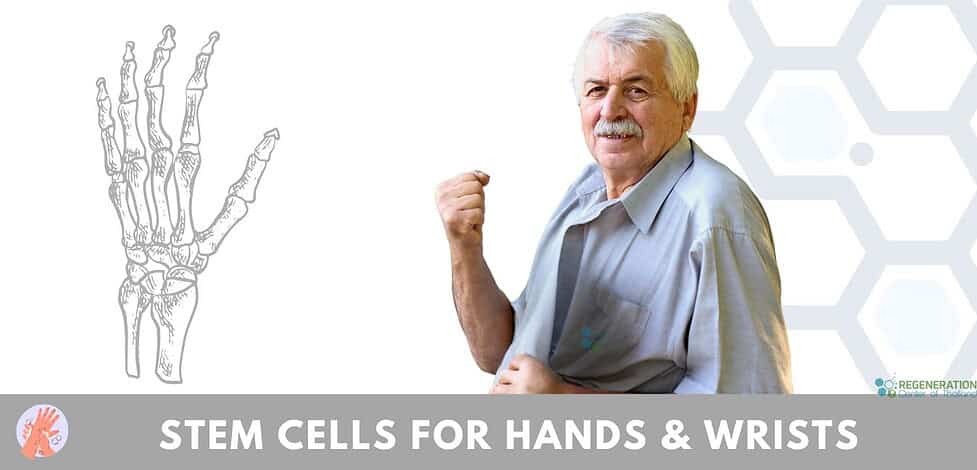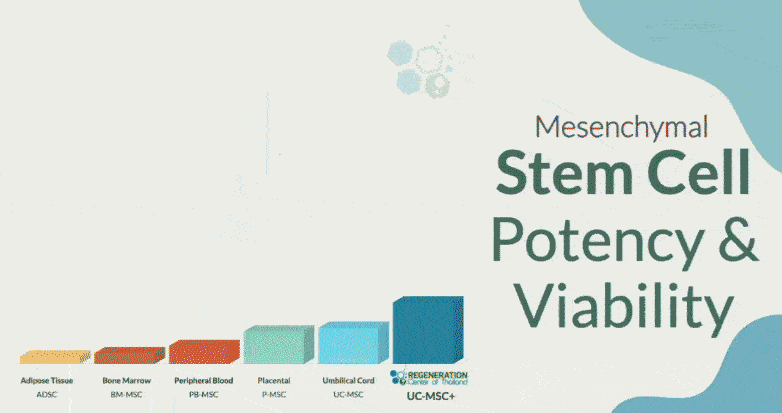The human hand and wrist are marvels of biological engineering, composed of an intricate network of small bones, joints, ligaments, tendons, and nerves. This complexity allows for an incredible range of motion, dexterity, and fine motor skills essential for countless daily tasks, from writing and typing to gripping objects and expressing gestures. However, this intricate structure also makes the hand and wrist particularly vulnerable to injury and degenerative conditions, which can lead to chronic pain, stiffness, weakness, and a significant loss of function, severely impacting quality of life.
For individuals suffering from conditions like wrist arthritis, carpal tunnel syndrome, tendonitis, ligament tears, or the lingering effects of fractures, traditional treatment pathways often culminate in recommendations for invasive surgery. While surgery can sometimes offer relief, procedures on the hand and wrist are notoriously complex, carry significant risks, and often involve prolonged and challenging rehabilitation periods with uncertain outcomes.[1]
Fortunately, advancements in regenerative medicine have paved the way for innovative, non-surgical alternatives. The Regeneration Center is at the forefront, offering cutting-edge Ortho+ stem cell protocols designed to treat wrist and hand injuries and degenerative conditions. Our approach utilizes the body’s natural healing mechanisms, employing enhanced UC-MSC+ mesenchymal stem cells and tissue-specific growth factors to target the source of pain and dysfunction, promote tissue repair, and restore function without the need for complex surgery.
Common Wrist & Hand Conditions We Can Treat
The Regeneration Center’s Ortho+ protocols offer a powerful, non-surgical treatment option for a wide range of wrist and hand conditions, including:
- Wrist Osteoarthritis: Degeneration of cartilage in the wrist joints, leading to pain, stiffness, and reduced motion.
- Thumb Arthritis (Basal Joint Arthritis): A common form of arthritis affecting the base of the thumb, causing pain with gripping or pinching.
- Rheumatoid Arthritis (RA) affecting Hand/Wrist: Autoimmune inflammation causing painful swelling, stiffness, and potential joint deformity.
- Tendonitis / Tendinopathy: Inflammation or degeneration of tendons, including:
- De Quervain’s Tenosynovitis (affecting thumb tendons)
- Trigger Finger / Trigger Thumb (tendon nodules causing catching/locking)
- Wrist Tendonitis
- Ligament Sprains or Tears: Injuries to ligaments such as:
- Scapholunate Ligament Tears
- Triangular Fibrocartilage Complex (TFCC) Tears
- Carpal Tunnel Syndrome (CTS): While primarily nerve compression, stem cells may help reduce associated inflammation and potentially support nerve health as an adjunct therapy or post-decompression.
- Early-Stage Avascular Necrosis (AVN): Affecting small bones like the scaphoid or lunate.
- Fracture Non-Union/Delayed Healing: Particularly in challenging bones like the scaphoid, where stem cells can potentially stimulate bone formation (osteogenesis).
- Sports-Related Injuries: Overuse or acute injuries are common in boxing, MMA, golf, tennis, or climbing sports.
- Post-Surgical Pain/Healing: Assisting recovery where previous surgeries have failed or resulted in chronic pain.
Limitations of Traditional Wrist & Hand Surgery
When conservative treatments like splinting, physical therapy, immersion therapy, massages, and corticosteroid injections fail to provide lasting relief for hand and wrist conditions, surgery is often presented as the next step. Standard surgical procedures include joint fusion, joint replacement (arthroplasty), tendon repair, ligament reconstruction, carpal tunnel release, or synovectomy.[2] However, surgery on the delicate and complex structures of the hand and wrist carries inherent risks and significant downsides:
- Invasiveness: These are often intricate surgeries requiring precise dissection around vital nerves and blood vessels.
- Scar Tissue Formation: Post-surgical scarring is inevitable and can significantly limit the range of motion and cause stiffness, a significant issue in the hand and wrist, where dexterity is crucial.
- Nerve Damage: The density of nerves in the hand and wrist increases the risk of accidental nerve injury during surgery, leading to neuropathy with numbness, tingling, or permanent weakness.
- Infection Risk: As with any surgery, there is a risk of infection, which can be particularly problematic in the complex joint spaces of the wrist and hand.
- Prolonged Recovery: Rehabilitation after hand or wrist surgery is often lengthy (months) and intensive, requiring specialized occupational or physical therapy to regain strength, flexibility, and fine motor control. Full recovery can take six months to a year or more.
- Surgical Failure Rates: Some procedures, like wrist fusion, intentionally sacrifice motion for pain relief. Others, like certain ligament reconstructions or small joint replacements, have variable success rates and may require revision surgeries later.
- Hardware Complications: Procedures involving screws, plates, or artificial joints can lead to issues like loosening, irritation, or the need for hardware removal.
Given these factors, many patients are understandably hesitant to undergo surgery and actively seek less invasive alternatives that offer effective relief and functional restoration.

Stem Cell Therapy for Wrist & Hand Repair
The Regeneration Center’s advanced stem cell protocols offer a fundamentally different approach. Instead of cutting, removing, or artificially replacing tissues, we harness the body’s innate healing intelligence. Mesenchymal stem cells (UC-MSC+) are the key players in this process. These powerful cells, derived from your body (autologous) or ethically sourced umbilical cord tissue (allogeneic), act as the body’s natural repair crew. When concentrated and precisely delivered to the injured wrist or hand, these MSCs orchestrate a complex healing cascade involving several key steps.[3]
When concentrated and precisely delivered to the injured area of the wrist or hand, these MSCs orchestrate a complex healing cascade:
- Anti-Inflammatory Action: MSCs release potent anti-inflammatory molecules (cytokines and growth factors) that significantly reduce the chronic inflammation driving pain and degeneration in conditions like arthritis and tendonitis.
- Tissue Regeneration: MSCs are multipotent, meaning they can differentiate into various cell types needed for repair, including:
Chondrocytes: To regenerate damaged cartilage in arthritic joints.
Tenocytes: To repair injured tendons (e.g., De Quervain’s, trigger finger).
Ligament Cells: To heal sprained or partially torn ligaments (e.g., Scapholunate, TFCC).
Osteoblasts: To stimulate bone healing in cases like scaphoid non-union. - Paracrine Signaling: Perhaps most importantly, MSCs release a cocktail of bioactive molecules (the paracrine effect) that signal your body’s local repair cells to become more active. They essentially “wake up” and coordinate the natural healing process.[4]
- Angiogenesis: They promote the formation of new blood vessels (angiogenesis), improving blood supply to injured tissues, which is often poor in tendons and cartilage, thereby accelerating healing.
- Modulation of Scar Tissue: Stem cells help organize the healing process to minimize excessive scar tissue formation, promoting more functional tissue repair.
For movement disorders, shoulder injuries, knee injuries, back injuries (ddd),spinal stenosis, ankylosing spondylitis, femoral nerve injury and hip injuries we provide a combination UC-MSC+ therapy with tissue-specific growth factors cultures from MSCs cells that act synergistically with stem cells, providing an additional boost to the regenerative environment. This combination approach maximizes the potential for natural, effective healing without surgical intervention.[5] Choosing stem cell therapy over traditional surgery for hand and wrist conditions offers numerous advantages: Our specialized protocol for treating wrist and hand conditions is designed for maximal efficacy and safety, delivered over approximately 8-12 days in Bangkok. Types of Cells and Delivery Methods: We utilize clinical-grade, lab-expanded UC-MSC+ cells (autologous or allogeneic). Allogeneic cells from umbilical cord tissue are often preferred for their potent regenerative capacity and low immunogenicity, avoiding the need for potentially invasive harvesting from the patient. Delivery requires exceptional precision in the hand and wrist. Injections are performed under local anesthesia using advanced imaging guidance (Ultrasound or CT Guided) to ensure accurate placement into the specific joint, tendon sheath, or ligamentous structure. Intravenous infusions may also be used to provide systemic anti-inflammatory benefits. Growth Factors Used: A proprietary mix of cultured growth factors is used for musculoskeletal repair, such as Platelet-Derived Growth Factors (PDGF), Transforming Growth Factor-beta (TGF-β), Fibroblast Growth Factors (FGF), vascular endothelial growth factors (VEGF), Connective Tissue Growth Factors (CTGF), and potentially Nerve Growth Factors (NGF) if nerve irritation is involved. Post-Treatment Rehabilitation: After therapy, attaining optimal function in the hand and wrist is highly dependent on structured rehabilitation. Upon returning home, we strongly recommend engaging with a physical or occupational therapist specializing in hand therapy or utilizing our optional rehab packages in Thailand. Rehab focuses on gradually restoring range of motion, strength, dexterity, and fine motor control. If you are experiencing chronic wrist or hand pain,sciatica, stiffness, weakness, or loss of function due to osteoporosis,tendonitis,rheumatoid arthritis, ligament injury, or other degenerative conditions, and you wish to avoid invasive surgery. In that case, you may be an excellent candidate for the Regeneration Center’s Ortho+ stem cell therapy. The first step is a comprehensive evaluation. Our orthopedic and regenerative medicine specialists will review your medical history, conduct a physical examination, and analyze recent imaging studies (MRI and/or high-resolution Ultrasound are often essential for hand/wrist issues). This allows us to determine if stem cell therapy is appropriate for your specific condition and to provide a realistic prognosis. The cost of treatment varies depending on the specifics of the injury, the number of joints or tendons involved, and the type and quantity of cells required for the customized protocol. After our medical team reviews your case, we will provide a detailed treatment plan outlining the procedure, the estimated duration of stay in Bangkok, and a fixed, all-inclusive cost for the medical aspects of your therapy. Don’t let chronic wrist and hand pain limit your life or force you into complex surgery prematurely. Explore the potential of regenerative medicine. Contact The Regeneration Center today to learn more about our advanced stem cell therapies and begin your journey toward natural healing and restored function. To learn more about best alternative to shoulder surgery, or hand/wrist injuries please contact us today. [1] ^Chanthana P, Atthakomol P, Manosroi W, Wongpakaran T, Kraisarin J, Sananpanich K. Comparison of patient preferences and responsiveness among common patient-reported outcome measures for hand/wrist injuries or disorders. J Orthop Traumatol. 2023 Jan 9;24(1):2. doi: 10.1186/s10195-022-00681-4. PMID: 36622514; PMCID: PMC9829933. [2] ^ Atthakomol P, Manosroi W, Mongkonkamthon A, Buranaworathitikul P, Wongcharoen W, Tongprasert S, Wongpakaran T. Cross‑cultural adaptation, construct validity, reliability, and responsiveness of the Thai version of the Patient-Rated Wrist/Hand Evaluation (Thai PRWHE). Qual Life Res. 2021 Jun;30(6):1793-1802. doi: 10.1007/s11136-021-02760-1. Epub 2021 Jan 27. PMID: 33506434. [3] ^ Songcharoen P, Wongtrakul S, Spinner RJ. Brachial plexus injuries in the adult. nerve transfers: the Siriraj Hospital experience. Hand Clin. 2005 Feb;21(1):83-9. doi: 10.1016/j.hcl.2004.10.002. PMID: 15668068. [4] ^Chong AK, He M. Stem cells and biological approaches to treatment of wrist problems. J Wrist Surg. 2013 Nov;2(4):315-8. doi: 10.1055/s-0033-1357761. PMID: 24436835; PMCID: PMC3826241. [5] ^ Mathot F, Rbia N, Bishop AT, Hovius SER, Van Wijnen AJ, Shin AY. Adhesion, distribution, and migration of differentiated and undifferentiated mesenchymal stem cells (MSCs) seeded on nerve allografts. J Plast Reconstr Aesthet Surg. 2020 Jan;73(1):81-89. doi: 10.1016/j.bjps.2019.05.030. Epub 2019 May 22. PMID: 31202698; PMCID: PMC6872919.Benefits of Stem Cells for Hand Arthritis
TREATMENT RISKS & PRECAUTIONS
Stem cell therapy for wrist and hand conditions is a safe and promising alternative but is unsuitable for all cases. Patients with complete tendon or ligament ruptures requiring surgical reattachment, very advanced (bone-on-bone) arthritis with significant deformity, active infections, certain types of tumors, or severe nerve compression potentially requiring surgical decompression first might not be ideal candidates for stem cell therapy alone. A thorough evaluation by our specialists is necessary to determine candidacy.The Regeneration Center Ortho+ Protocol for Wrist & Hands
Number of Cell Infusions: The protocol typically involves 2-8 targeted infusions of enhanced UC-MSC+ mesenchymal stem cells combined with tissue-specific growth factors tailored to the injury (e.g., factors promoting cartilage, tendon, or ligament regeneration). The exact number depends on the condition’s complexity and severity.Are You a Candidate for Wrist/Hand Stem Cell Therapy?
Cost of Stem Cells for Wrist Pain & Hand Arthritis
Published Clinical Citations


